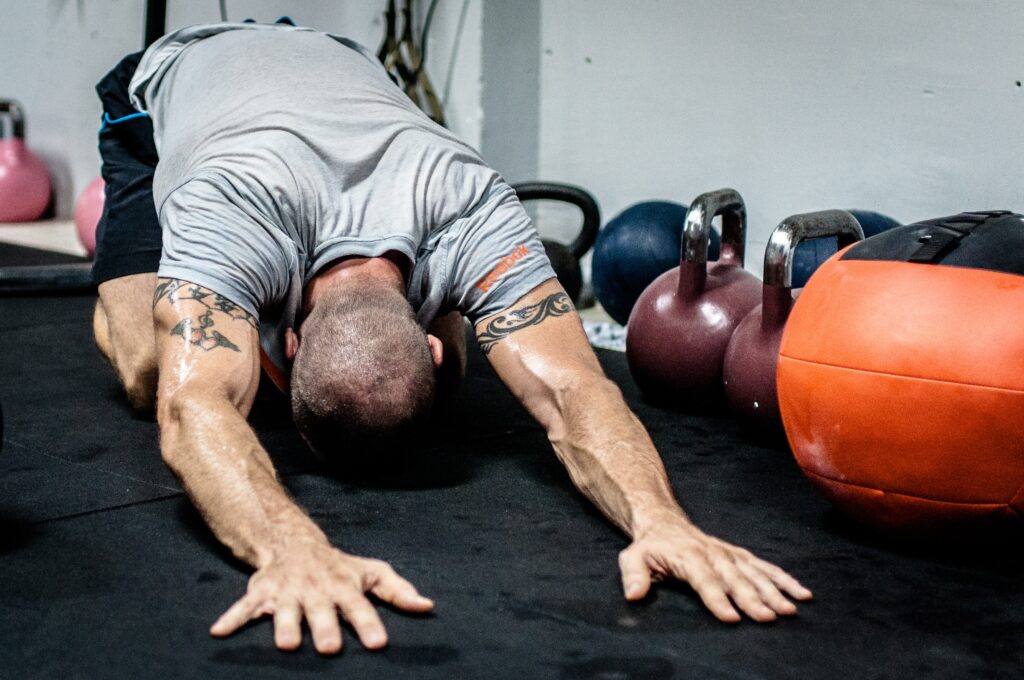Build up your muscles! How and why muscles grow Posted in: Workout
It seems to be no secret to anyone that resistance training is needed to improve both muscles and appearance. Physical Workouts such as dumbbells increase strength and muscle at the same time. However, what drives muscles to physical growth? Dumbbell training alone does not cause muscle growth: to stimulate muscle growth, you need the physical impact with greater intensity than you are used to receiving. The muscles growing process from strength training occurs as a result of an increase in the thickness of muscle fibers and the fluid volume in the sarcoplasm of muscle cells. And understanding this process is important to help determine the best training method for increasing your muscles.
The ability to gain muscle mass depends on many factors: gender, age, training experience, genetics, sleep, diet and fluid intake. In addition, emotional and physical stressors play an important role. Increase the rate of muscle growth in contraction.

Mechanical and metabolic stress
Scientists are still undecided about what exactly causes muscle growth. Dumbbell training creates two specific types of stress: mechanical and metabolic. Both of them provides the necessary stimulus for muscle growth. In addition, they work in pairs, and this makes it difficult to isolate the impact of each of them.
What is mechanical stress? This is a consequence of training, microtrauma of muscle tissue, which provides a soreness. During the recovery process, mechanisms that stimulate the growth of muscle tissue are activated.
Metabolic stress occurs as a result of the production and consumption of energy by the muscle, which is necessary to ensure contractions during exercise. That is, metabolic stress promotes the release of hormones and leads to muscle hypertrophy.
By understanding these factors, you will have a better understanding of how to use exercise stress. The training program should be designed with the correct variables applied: exercise intensity, reps and rest intervals. In short, everything that will help create mechanical and metabolic loads that stimulate hormones and the synthesis of proteins responsible for muscle growth. We have already written about how to choose the weight of dumbbells for exercise (5 RULES FOR CHOOSING THE RIGHT DUMBBELL WEIGHTS)

Mechanical stimuli of muscles growing
To develop an exercise program for maximize muscle growth, you need to understand muscle physiology. Muscles are made up of fibers, which divided into slow-twitch and fast-twitch. The slow-twitch fibers contract for a long time, while the fast-twitch can generate a large force for a short time, without the use of oxygen, which makes them completely anaerobic. Slow-twitch fibers are best suited for extended activities that require minimal effort. Fast-twitch fibers are larger in diameter than slow-twitch fibers and have a more significant effect on muscle growth. To increase them, you need to create a high mechanical and metabolic load.
Metabolic stimuli of muscles growing
Why Fast-twitch Fibers? In the dumbbell workout, muscle tissue is activated according to the principle of size: from small (slow-twitch) to large (fast-twitch). At the same time, it is important that during exercise, muscles need glycogen stores, which are obtained with proper nutrition (SPORT NUTITION TIPS: EATING THE RIGHT FOODS FOR EXERCISE). When glycogen stores are depleted, muscle cells adapt, storing more glycogen during the recovery phase. One gram of glycogen, when stored in muscle cells, retains up to 0.1 oz of water. Doing high reps to failure will deplete glycogen stores, leading to muscle gain after replenishment.
Mechanical stress likely plays a major role in stimulating muscle growth. According to David Sandler, Director of Education and Science at iSatori Nutrition and a former strength coach at the University of Miami: “weight lifting causes structural damage and breakdown of muscle proteins. After the damage has occurred, the body releases proline-containing peptides as signals for the endocrine system to begin the repair process.

Endocrine stimuli of hypertrophy
Mechanical and metabolic stress affecting muscle fibers affects the endocrine system, increasing the production of hormones responsible for the restoration of damaged muscle tissue and the formation of new cellular proteins. Protein utilization and subsequent muscle growth are associated with damage to muscle fibers that were contracted during exercise. Heavy weights, lifted in high repetitions, increase muscle protein damage and signal protein reconstruction and new muscle building.

That is, resistance training creates both mechanical and metabolic stress. It is not known which of them affects these processes more, however, training with lifting large weights with short rest periods can lead to an increase in the production of anabolic hormones that promote muscle growth. That’s why the dumbbell exercises are best friend to build up muscles and appearance.





